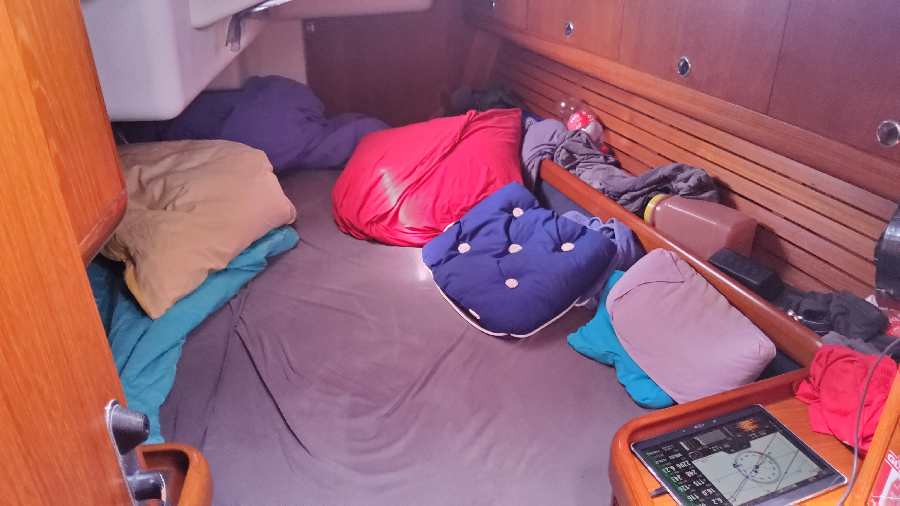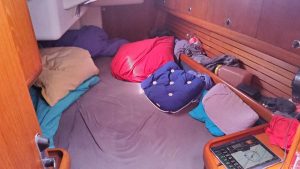This is what my bunk in the aft cabin looks like. No, I did not tidy up for the photo, you see the naked truth. Sleeping is essential on a singlehanded ocean passage. When I explain the sleeping pattern, the mothers will remember and know what I am talking about. I sleep in segments of varying duration. Here, in the middle of the Pacific, I haven’t seen a ship for over 10 days. My AIS can detect a ship at a distance of more than 20 nm. I have two AIS alarms continuously activated. So here, I set two alarm clocks to 99 min. In dense ship traffic or in areas with fishers without AIS, I can occasionally only sleep for 15 min. I difficult situations, I can’t sleep at all for several hours. Sleep is different from at home. Automatically, part of my brain remains alert. I wake up when there is a change of wave pattern, wind noise, flapping sail, unusual noise or alarm. So I sleep in 6-10 segments every night. Crucial is, to be able to go to sleep immediately, even if you have been out in the dark, adjusting the sails. Even after a “space walk” with a safety tether, to the mast or the foredeck. Going to sleep immediately seems to be a mechanism you can train. I have regularly trained this in everyday situations after my first solo ocean passage in 2000. Also back in the years when I was doing night shifts at the hospital I had to learn to go to sleep whenever possible. Just switch off the brain and go to sleep. Adrenaline has a biological half life of around 2 minutes, so if you stop fiering adrenaline continuously, you have a chance to go to sleep immediately. Yes, I know, it is more complex than this. This does not work for everyone, I might just be lucky to have this ability.
Categories
Bedroom Story

